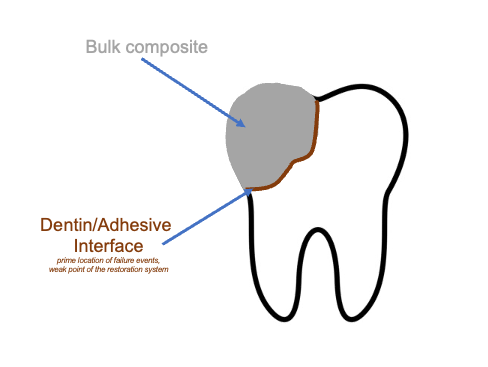The holidays are full of comfort and joy, except for your teeth. The culprit is sugar.

“Simply put, the holidays are hard on your teeth,” said Caroline Szczepanski of Michigan State University. “Sugary treats attract bacteria and can kickstart a process that you may not feel the effects of for several months.”
So how do you maintain good dental practices during holiday chaos?
Szczepanski happens to know her way around complicated confections. At work, she’s an assistant professor of Chemical Engineering and Materials Science and director of MSU’s Szczepanski Research Group.
At home, she is the watchful mother of children aged 3 and 1.
“Research shows that the ages of 3-5 years are critical to oral health development. Generally, sugary things like food and drinks will attract bacteria. That bacteria can kick start the degradation of healthy materials in your mouth that will then need to be replaced.
In my lab we are developing new polymers for different applications, including dental materials. Our expertise is in polymer chemistry, material design and polymer engineering. We have found that what nature gave us is hard to improve on, let alone replicate.”
Szczepanski said she and her students consistently seek “out of the box” ideas. “We leverage ideas and designs from nature, and sometimes look at strategies in diverse industries and application fields. Can strategies in packaging be used for dental materials? We are always trying to shift the boundaries by exploring these questions. We explore components to maximize strength.”
Examples of their research include composites for enhanced mechanical, thermal and conductive properties; the incorporation of cellulose nanocrystals for improved pressure-sensitive adhesives; and the design of biomimetic surfaces to tailor the optical appearance of coatings.
Szczepanski noted that researchers haven’t been able to duplicate the complex structure of a tooth.
“We’re working to mimic the complex bone structure in your mouth. So far, we haven’t been able to make synthetic materials that fully integrate with your native tooth structure nor last as long as what nature gave you.”
Statistics show it’s a dentistry project worth pursuing. More than 90 percent of American adults need a filling at some point. In 2019, replacing failed fillings was a $5 billion industry.
“If you’ve ever had to get a replacement filling because there’s a crack in it or it is wiggling around — that’s what we’re working on here at MSU — reducing that rate of failure and the lifetime of the initial filling.
“My best advice is to stay up with your routine care. Simply remembering to brush your teeth can go a long way to a more permanent solution,” she added.
